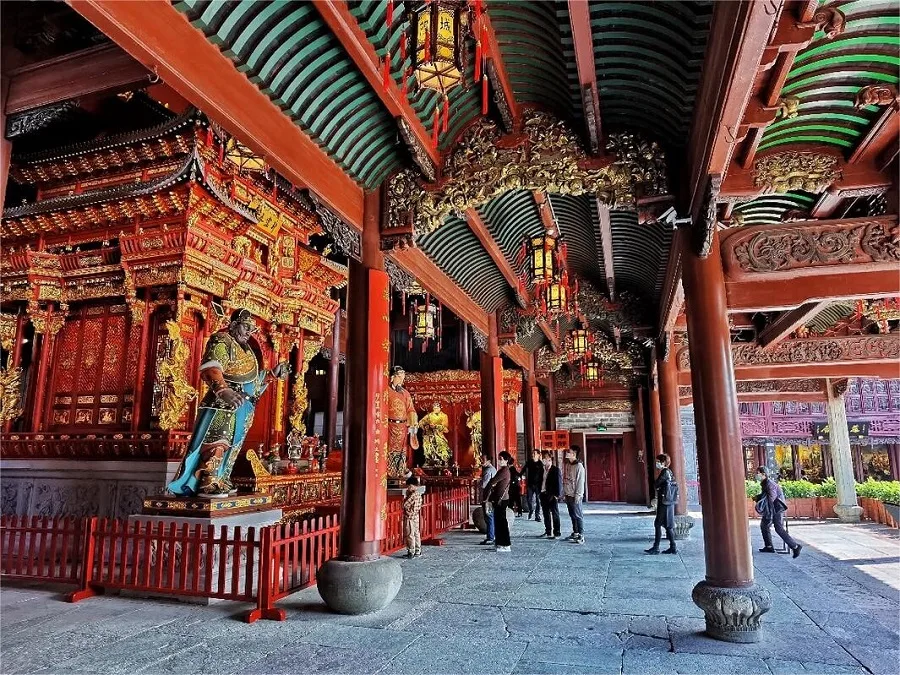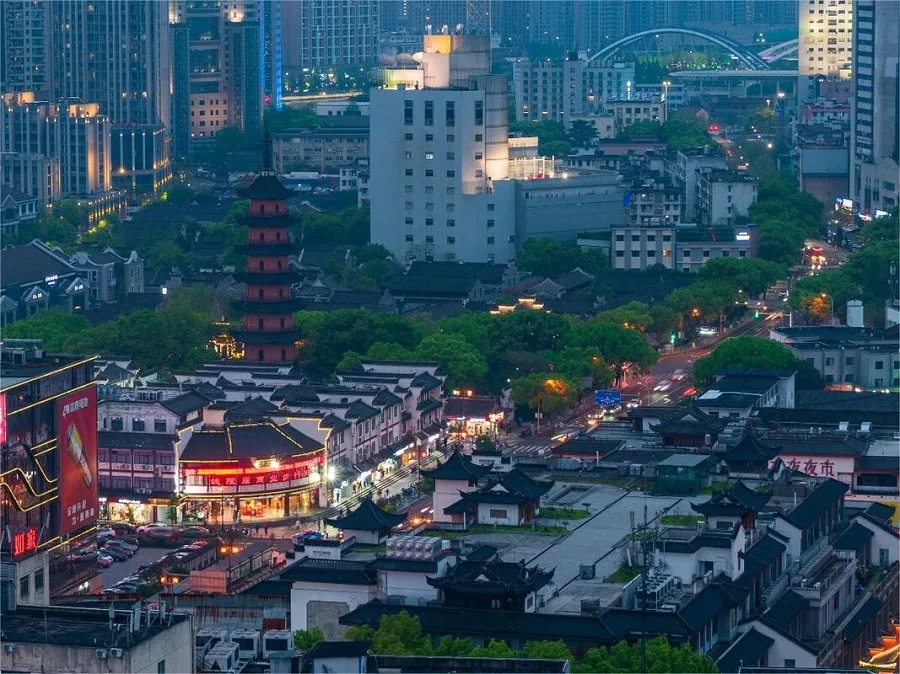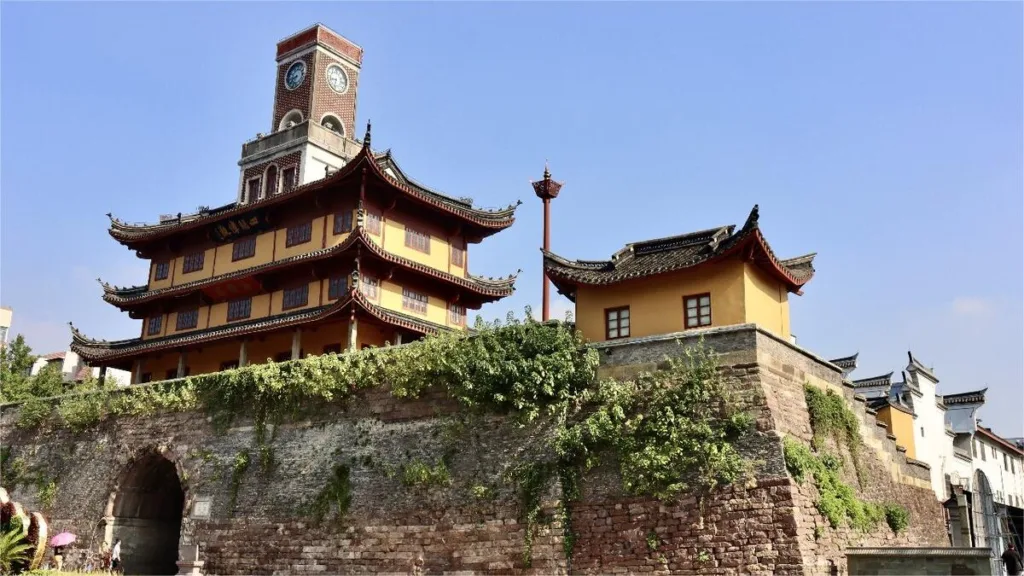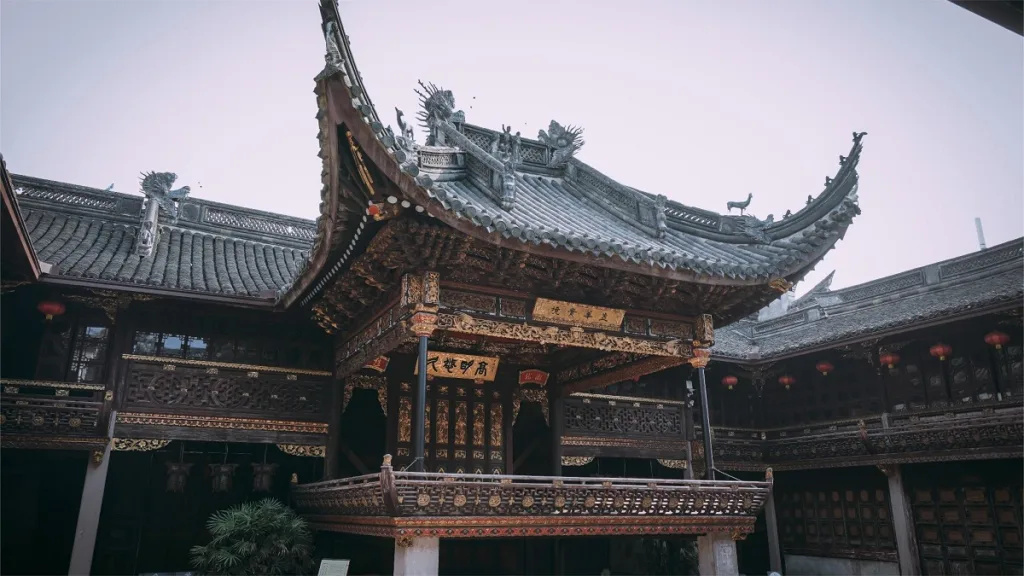Ningbo City God Temple, known as Chenghuang Miao (城隍庙) in Chinese, is one of the largest remaining City God temples in Zhejiang Province, China, with a history dating back to the second year of the Zhenming era of the Later Liang dynasty (916 AD), when Governor Shen Chengye built a City God shrine 50 steps southwest of the sub-city. In the fourth year of the Hongwu era of the Ming dynasty (1371 AD), the City God Temple was relocated to its current location. In the fourteenth year of the Hongwu era, with the renaming of Mingzhou Prefecture, the temple was officially named “Ningbo City God Temple.”
Table of Contents
- Basic Information
- Location and Transportation
- Highlights of Ningbo City God Temple
- Vlog about Ningbo City God Temple
- Attractions near Ningbo City God Temple
Basic Information
| Estimated Length of Tour | 1 hour |
| Ticket Price | Free |
| Opening Hours | 8.30 – 16.30 |
Location and Transportation
Located in the heart of Ningbo, China, at 22 Xianxue Street, Haishu District, Ningbo City God Temple is a prominent cultural and religious landmark in the region. To get there, you can choose one of the following ways:
Bus: Take bus 6, 9, 30, 50, 118, 134, 305, 362, 364, 507, 518, 525, 560, 809, 812, or 906 and get off at Chenghuangmiao Stop (城隍庙站)
Metro: The closest metro station to the attraction is Chenghuangmiao (城隍庙) on line 2. After getting out of the station from Exit C, you will find the City God Temple right across the street.
Highlights of Ningbo City God Temple
Magnificent Architecture

Occupying a vast area of 5,333 square meters, the temple has a total construction area of 6,000 square meters. The architectural style of the temple is unique, blending the charm of ancient architecture and showcasing the exquisite craftsmanship of ancient artisans. The temple’s screen walls, hallways, main gates, front stages, pavilions, main halls, rear stages, and chambers collectively form a magnificent architectural layout of “four entrances, four courtyards, two front stages, left and right wing halls.”
Deities Worshipped in the Temple

The City God worshipped in the temple is General Ji Xin of the Han dynasty, an important deity in folk beliefs. The temple also houses various halls dedicated to different deities such as Wenchang Hall, Cihang Hall, Yue Lao Hall, Caishen Hall, Twenty-four Officials Hall, Sixty Jiazi Hall, Smallpox Deity Hall, and Niangniang Hall, each catering to diverse religious needs.
Notably, the Huaitang Shrine in the temple is dedicated to eight representative figures of benevolence from Ningbo’s history, including Han Cha, who founded Ningbo’s sub-city; Ying Biao, who built the first spiritual bridge; Wang Yuanwei, who built the Taishan Weir; Huang Sheng, who constructed Ningbo Luo City; Shen Chengye, who built the City God Shrine; Wang Anshi, the county magistrate of Yinxian in the Northern Song dynasty; Zhang Qi, who moved the temple to its current location in the early Ming dynasty; and the national hero Qian Suyi. These figures enrich the cultural connotations of the City God Temple and demonstrate Ningbo’s profound historical and cultural heritage.
Lively Atmosphere

Moreover, the City God Temple remains a longstanding commercial center in downtown Ningbo, with thousands of shops gathered here. It attracts countless visitors seeking Ningbo’s local delicacies such as Gāngyā Gǒu Tāngyuán (soup dumplings) and various snacks from around the region, making it an ideal destination for experiencing Ningbo’s folk customs and flavors.






